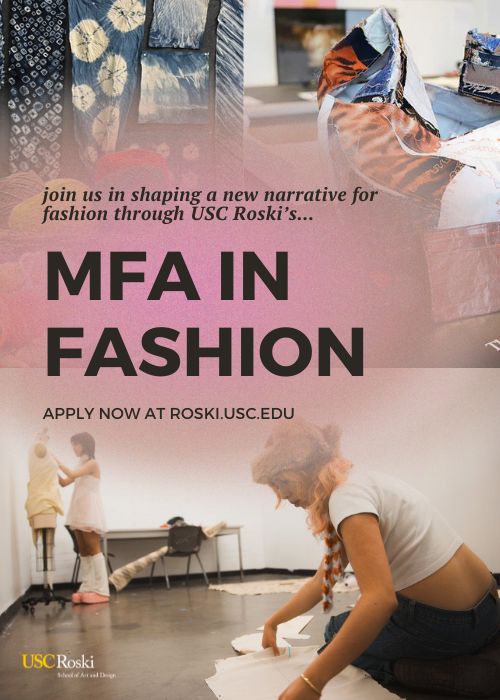So like a few of you (not many more—which was wise—you really didn’t miss anything), I went down to the Grand Central Market at 3rd and Broadway downtown to hear Dave Hickey plug his latest, Pirates and Farmers, subtitled “Essays on Taste,” under MOCA’s auspices—which I confess struck me as suspect from the get-go. But MOCA’s communications people are pretty broad-minded, so I have to give them credit for risking a taste, loosely speaking, of Hickey’s institutional critique.
My first taste of the volume was an anecdotal postscript on the passing of Hunter S. Thompson that took him to task less for his overall misanthropy (and, when you get right down to it, misery), than his essentially missing the point of 1960s and 1970s pop culture and not incidentally most of the fun. The impression I’ve formed over the years from his various appearances at lectures, press conferences, interviews, and gallery events is that Hickey has little patience for people who miss the point, and still less for those who evade it.
My suspicions were not exactly quelled by confronting a market that was already closed. (I was under the impression that Grand Central was open relatively late—or at least as late as the Farmers Market.) Although I took a few notes, they in no way should be construed as reportage since Hickey was already well into his talk by the time I arrived. Speaking of institutional critique, Hickey was already unloading on art schools—their “teachers will crush the aspirations of their best students….”—and worse: “Art teachers will do anything to destroy your life.” On the other hand—“There are no critics….; … no critics who will explain difficult art.” And summarizing the point, “No one is saying no.”
As one who is frequently inclined to say, ‘no’ (and worse), I had to agree; but thought to draw him out a bit—to the extent that, given the size of the industry, it’s expedient for most critics, reviewers or reporters to say ‘no’ simply by saying nothing at all. Also, on the point of explaining “difficult” art, it struck me as just slightly odd coming from such an exponent of rich and resplendent—self-expository if not exactly self-explanatory—surfaces; who exactly might he trust to tackle the “difficult” stuff (now that he’s retired from the fray)? Hans-Ulbrich Obrist? Yves-Alain Bois? (Don’t look at me!) And where exactly? Artforum? October? Apollo?
Roberta Smith and Holland Cotter set a pretty high standard for metro daily art criticism; but how often do they really have the scope (and pages!) to tackle anything “difficult” for a mass audience? (I didn’t see Christopher Knight, who was apparently in the audience; but certainly he does his best within the space the Los Angeles Times allots to him.) Let’s face it, there are probably fewer than a half-dozen critics most of us connected with the local art industry commentariat trust with long-form criticism and essays, although they’re probably different for each one of us.
Corollary to the dearth of real critics, “there are curators!” (In my notes, it looked like ‘cremators’; I wonder why.) He didn’t name any names; but clearly the room wouldn’t have been big enough for one of them. “You will discover perfect simulations of art.” He could be more specific, too, attacking Robert Morris’s “puerile piece of shit….” The art world was “being run by losers.” Whether you agreed or not, the performance had already devolved into a rant. A New York party anecdote fell flat. He fell back into what has become his default exhortation to “try to find the moment before [the art world] started sucking.”
By that point, I just wanted it to be over and I had the impression a lot of other people did, too. Setting aside my question about defining the parameters of “difficult” art, I thought to ask him simply whether, notwithstanding the dismal state of the industry, there might be any ‘millennial’ artists he could single out who stood apart from this ‘sucking’ vortex. Less than 13 years ago after all, he’d had no problem finding about 40 artists who stood out from the hordes headed for the art pits. I didn’t want to be the first to throw out a question, though, so I held off. Alas no one else did, either. For all that, a long queue formed nevertheless to purchase the book and have Dave sign it.
When I opened up my laptop at home and looked at my Twitter feed, I saw a comment one of my Artillery colleagues had made to a Carolina Miranda tweet about the Hickey event. Miranda had apparently been there and tweeted a succession of comments which I scrolled down to see. Among them—now already quoted by Deborah Vankin in the Los Angeles Times—“Uh oh. This is where Hickey starts talking about identity politics, Apparently, identity politics killed the art underground.” And then, “According to Hickey, art was awesome until identity politics and artists teaching in universities started ‘raising consciousness.’” This was about the moment I had only just entered the space, so even this was a bit blurred for me. But he was clearly getting into his bugbear issue of academic and institutional agenda-setting in the fine arts. Under different circumstances, he might have been persuaded to draw a few distinctions between causes and effects, but he just steamrolled on to successive points about art schools crushing the best artists (I wondered whether he might add something about museums killing art)—with Miranda tweeting at his heels.
Miranda’s tweets elicited several comments and retweets, among them from Modern Art Notes’ Tyler Green and the artist Nayland Blake, who, considering both the substance of some of his more controversial work and his academic role as chair of the ICP-Bard College MFA program, may have seen himself directly in the line of Hickey’s fusillade, and tweeted back, “As a multi racial homo egghead, I sincerely apologize for breaking the art world.”
Knight offered a more nuanced restatement of Hickey’s viewpoint in Vankin’s follow-up. But the nuance was somewhat lost in Hickey’s drumroll that Wednesday evening. (And although I’m not exactly a fan, I thought the implicit institutional critique of some of Blake’s masochism-inflected work offered rich possibilities in terms of a real conversation with Hickey.) Responding to the L.A. Times whipped-up sound and fury, Miranda offered her own thoughtful follow-up under several bullet points, including the issue of identity politics. I thought she made an excellent point here, especially with respect to the quasi-nostalgia of Hickey’s “finding the moment before it all started sucking.”
We can find many such moments in the days before L.A. really came into its own as a major art production center—not coincidentally, I think, a time marked by a high degree of convergence between high culture and mass culture or the pop world (and especially the pop music world—a convergence Hickey was uniquely positioned to appreciate). But that’s the thing about nostalgia—you find that you can’t go home again. Looking back on those halcyon days, we recognize the extent to which our view of that world—both high culture and mass culture—was cyclopsian: a world segregated, isolated, parochial and provincial, a scattering of islands (really one island—Manhattan, and one beach—Venice) in a much larger stream to which (as the 2012 “Asco” and “Now Dig This!” museum shows vividly reminded us), we were oblivious. Also, as Miranda’s post points out, the ‘rebels in paradise’ crowd (not unlike New York’s fine arts elite) was not just a boys club, but a white boys club. As a cultural critic, one of whose principal themes has been the functioning of art in democratic societies, and more specifically, the convergence and coalescence of societies around art and its dialectics, Hickey should be the first to understand this. (LACMA’s “Asco: Elite of the Obscure” show was particularly resonant on this point.) I have no doubt that he does—but it doesn’t come across too well in a rant or on a Twitter-feed.
This doesn’t discount the fact that most of the purported art out there sucks and not enough of us are saying ‘no’ to it, rather than enabling and encouraging it, however passively. Amid the diversity of societies, there will always be (pace “Asco”) elites and gate-crashers; and as John Waters always reminds us, “contemporary art hates you.” (“And,” I want to say, “your little dog, too!”) Not everyone gets an all-access pass to just any society, much less admission to its elite. Then there are always the dissidents, the rebels and the non-conformists. Not everyone is going to ‘get it’—nor should they. But we try to keep a ‘brick in the door.’ And it never hurts to keep an open eye, ear, and mind.




